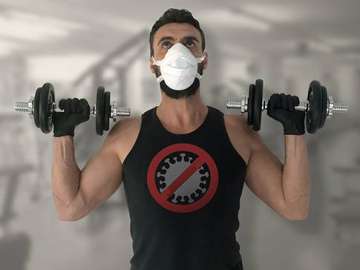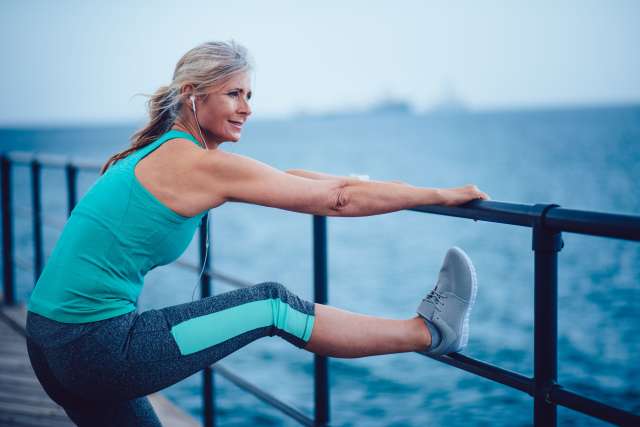A recent surge in COVID-19 cases has led to the shuttering of many Southern California gyms. But when you are allowed back inside, there are steps you can take to minimize your risk of exposure to the coronavirus.
Working out at the gym is riskier than jogging or bicycling outside during the pandemic. Gym-goers are more likely than those who exercise outdoors to come into contact with the novel coronavirus (the cause of the COVID-19 illness). That’s because inside the gym you’re alongside others who are sweating and breathing heavily – some of whom could be infected but showing no symptoms.
Before you return to the gym, whenever that time comes, take these steps to protect yourself:

Assess the Situation
To find out if it’s safe to go back to the gym, ask management at your gym what COVID-19 precautions are in place. Questions may include:
- Is the gym limiting capacity?
- How is equipment being cleaned between uses?
- Will some of the equipment be off-limits?
- Are locker rooms, bathrooms and pools open?
- Does the gym have a filtered air-ventilation system or open windows?
Sign in Remotely
As a way to reduce the number of people in the gym, you may have to reserve your workout time in advance. Make your reservations and sign in online or via an app, if possible. This way you can avoid touching screens and keypads others have touched and limit face-to-face interactions.
Maintain Physical Distance
Experts recommend keeping at least six feet of space between yourself and others to minimize coronavirus exposure. Infected people can release virus particles when they speak or breathe. Keeping your distance protects you from particles that may be in the air.
Many gyms have spaced out the cardio equipment, blocking off or removing every other machine. Make sure that’s the case in your gym, too. Otherwise, distance yourself from others and avoid being directly behind someone. Their breath could flow back toward you. In other areas of the gym, you may also see tape on the floor showing you where to stand so you’re not too close to others.
Avoid Group Classes
It’s challenging to maintain six feet of physical distance in a group class. Instead, ask your gym if they’re offering any outdoor classes, where airflow minimizes risk and you can spread out. They may also provide members with access to online video classes you can do at home.
Wear a Mask and Gloves
To minimize your exposure to the coronavirus, wear a mask that covers your nose and mouth and gloves that go over your entire hand and fingertips at all times. Keep them on during cardio, weightlifting and while walking through the gym. If you wear reusable gloves made of cotton or another material, be sure to wash them between uses.
Clean Equipment
Do you see the staff at your gym cleaning the machines and equipment after each use? If not, you want to be sure that you can clean the equipment yourself.
Your gym may provide disinfecting bleach wipes or other cleaners approved to kill the coronavirus for you to use. If not, bring your own from home and wipe down handles, screens and any other parts of the equipment you’ll touch.
Some equipment may be unavailable, such as yoga mats and foam rollers, because it’s too difficult to disinfect.
Avoid Water Fountains
Be sure to bring your own water bottle so you can skip the water fountain. Also, avoid the water bottle filling station. These are high-touch, germy spots.
Visit the UCLA Health patient blog for more tips on personal and social activities during the COVID-19 pandemic. You can also get the latest coronavirus news from UCLA Health.



